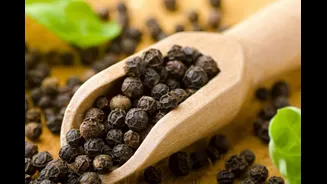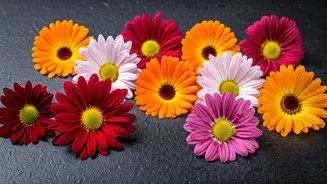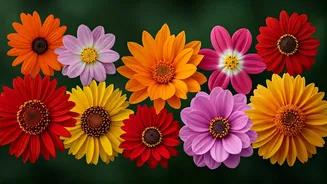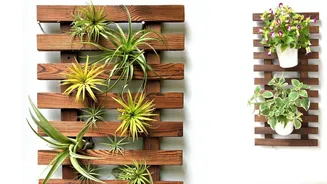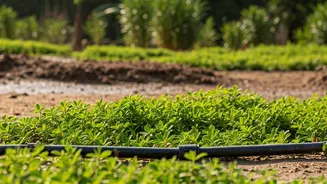Choose the Right Pot
Selecting the appropriate pot is the initial step for successful black pepper cultivation. The size of the pot must be carefully chosen, taking into consideration
the mature size of the pepper plant's root system. An ideal pot should be roughly 12 inches in diameter and depth to allow ample space for the roots to expand. The material of the pot is another key factor; terracotta pots, while aesthetically pleasing, tend to dry out the soil quickly. Therefore, it's preferable to use plastic or glazed ceramic pots. These materials retain moisture better, benefiting the plant during the drier winter months. Ensure the pot has drainage holes at the bottom. This prevents waterlogging, which can be detrimental to the plant's health. The choice of the right pot ensures the plant gets off to a healthy start.
Optimal Soil Mixes
The composition of the soil has a crucial role in the health and vitality of your black pepper plant. Black pepper plants flourish in a well-draining yet moisture-retentive soil environment. A blend comprising equal parts of garden soil, compost, and coarse sand is highly recommended. The garden soil provides essential nutrients, while the compost enriches the soil with organic matter, improving its fertility. The sand ensures adequate drainage, which is crucial to prevent root rot, a common issue in overly wet conditions. Additionally, consider adding a small amount of perlite or vermiculite to the mix. These materials improve aeration and water retention. Prior to planting, ensure the soil mix is thoroughly blended and slightly moist to promote successful root establishment. Regular soil testing will help in monitoring nutrient levels, supporting the plant's growth.
Provide Ample Sunlight
Black pepper plants thrive in environments that receive ample sunlight. During the winter months, when sunlight hours are reduced, it's crucial to position your plant strategically. Place the plant in a location where it can receive at least six to eight hours of direct sunlight each day. A south-facing window is usually the best option, as it typically offers the most sunlight exposure. If natural sunlight is insufficient, consider supplementing it with artificial grow lights. These lights can provide the necessary intensity and duration of light for optimal growth. Avoid placing the plant too close to the window, as cold drafts can be detrimental. Regularly rotate the plant to ensure even exposure to light, preventing uneven growth. This strategic approach to light exposure is vital for the plant's health.
Watering Wisely
Proper watering is essential for maintaining a healthy black pepper plant. During winter, watering frequency should be carefully calibrated to avoid overwatering, which can lead to root rot. As a general rule, water the plant when the top inch of the soil feels dry to the touch. The plant's water requirements can vary depending on the environmental conditions, such as temperature and humidity. It is best to water the plant thoroughly, ensuring that the water drains freely from the bottom of the pot. Avoid letting the plant sit in standing water, as this can be harmful. In colder climates, reduce the watering frequency to prevent the soil from becoming waterlogged. Consistent monitoring of the soil moisture levels and adjusting the watering schedule accordingly will support the plant's health and growth. This careful approach to watering is crucial to preventing over or under-watering.
Maintain Humidity Levels
Black pepper plants thrive in humid environments, which is essential, particularly during the dry winter months. To enhance the humidity, consider using a humidifier near the plant, aiming for a relative humidity level of around 60-70%. If a humidifier is not available, there are alternative methods to increase humidity. You can place the pot on a tray filled with pebbles and water. As the water evaporates, it will increase the humidity around the plant. Another simple method is to mist the plant regularly with water, especially during the day. However, avoid misting at night to prevent fungal diseases. Grouping several plants together can also create a microclimate with higher humidity. This approach enhances the plant's growth and overall well-being. Regular monitoring of the humidity levels and consistent efforts to maintain adequate moisture are vital.
Fertilize Regularly
Regular fertilization is important for supporting the growth of your black pepper plant, especially during its growing season. Select a balanced, water-soluble fertilizer, like a 10-10-10 or 20-20-20 formula. Dilute the fertilizer to half the recommended strength to avoid over-fertilizing, which can cause damage to the plant. Feed the plant every two to four weeks during the winter months, when the plant's growth is more active. Always water the plant before applying fertilizer to protect the roots. It is also important to avoid fertilizing a plant that is stressed or not actively growing. Reduce or stop fertilizing during the plant's dormant periods. Regularly assess the plant's response to the fertilizer and adjust the feeding schedule accordingly to meet its specific needs. Proper fertilization will ensure the plant has the essential nutrients to flourish.
Protect from Pests
Protecting your black pepper plant from pests and diseases is essential for its survival and prosperity. Regularly inspect your plant for common pests, such as spider mites, mealybugs, and aphids. These pests can cause significant damage. If you find any pests, treat them immediately using organic insecticides or insecticidal soap. Ensure proper ventilation around the plant to prevent fungal diseases, which are more common in humid conditions. Remove any infected leaves or plant parts promptly to prevent the spread of diseases. Consider using preventative measures such as neem oil sprays to deter pests. Ensure the plant is not overcrowded; proper spacing allows for air circulation. Consistent monitoring and timely action will minimize pest and disease issues. Keeping the plant healthy will support its ability to thrive during the winter season.


